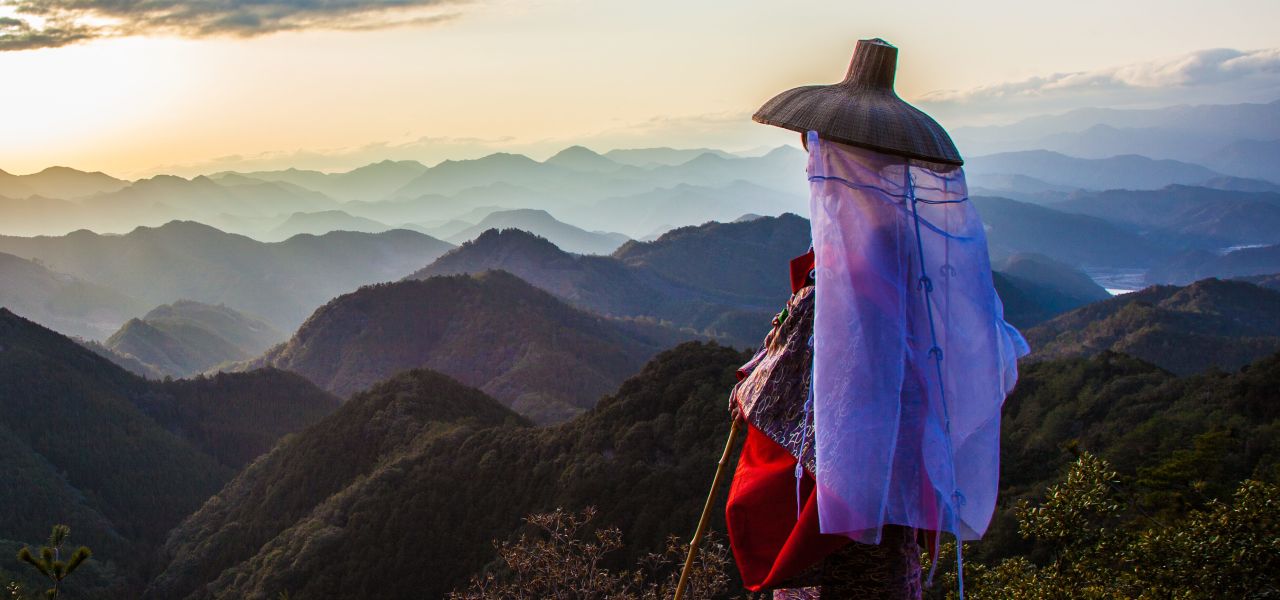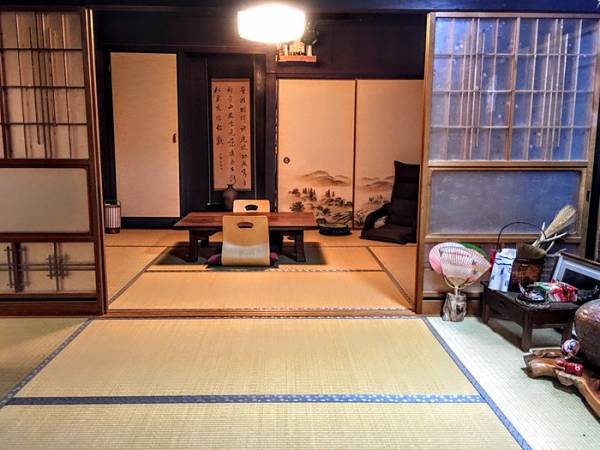Current as of: January 15, 2026 - 19:44

Walk the Kumano Kodo Trip Notes
- Ways to Travel: Self-Guided Holidays
- Programmes: Walking & Trekking
-
Activity Level:
4 out of 7 - Moderate & Challenging
- 11 Days: Land Only
- Ages: 8+
- Trip Code: W10KK
Trip Overview
Walking the ancient pilgrimage trail, Kumano Kodo
Embark on an incredibly rewarding hike through the Kii Peninsula Mountains along an ancient pilgrimage trail known as Kumano Kodo. The “Kodo” (old ways) are a key part of the region’s World Heritage destination and have been in use for 1,000 years. The pilgrimage routes were developed as a way for people to move between the sacred areas on the Kii Peninsula. At the centre of this religious area are the three Kumano shrines: Hongu Taisha, Hayatama Taisha and Nachi Taisha, collectively known as Kumano Sanzan.
The Kii Peninsula points south away from Kyoto and Osaka and is one of the most remote and mystical areas of Japan, despite its proximity to these great cities. From the 11th century, successive emperors and their families made the long and difficult pilgrimage to Kumano from Kyoto. Our trip focuses on the Nakahechi-do, which weaves its way through the forested mountains and small villages to the Grand Shrine of Hongu, before finishing near the Pacific Ocean at Nachi Grand Shrine.
Explore the fascinating city of Kyoto before beginning your Kumano Kodo journey and end with two nights in Osaka. Famous for its beautifully built Buddhist temples and traditional teahouses, Kyoto is a great introduction to your Japanese adventure. From here, you can visit the historical city of Nara, full of cultural treasures and tranquil gardens.
Osaka is known as the food capital of western Japan, inheriting its name in part from the fantastic Dotonbori area in the south of the city. Countless restaurants line the Dotonbori-gawa River offering dinner with views. The city is also home to Osaka-jo – a symbolic castle, re-built to its grand size after repeated fires.

Highlights
- Walk the ancient pilgrimage route Kumano Kodo, one of Japan’s most remote and rewarding journeys
- Witness the Grand Shrines, bathe in the hot spring thermal waters, and admire stunning views over the mountains towards the Pacific Ocean
- Immerse yourself in Japanese culture, staying at traditional ryokans and minshuku guesthouses
Adult min age: 8
Itinerary
Land Only
- Start City: Osaka
- End City: Osaka
Flight Inclusive
- Start City: London
- End City: London
Land Only Itinerary
Take the express train from Osaka Kansai Int. Airport to Kyoto City (approx. 70mins), then a local taxi to your first hotel. (approx. 10mins).
Overnight Kyoto.
Enjoy a rest day in the incredible city of Kyoto, famous for its Buddhist temples, tranquil gardens, and traditional teahouses. We recommend visiting the historical city of Nara, full of cultural treasures and expansive parks, located approx. 1hr from Kyoto city on the train.
Overnight Kyoto.
Your day begins by taking the train to Kii-Tanabe (included) then the bus to Takijiri (paid locally – total travel time approx. 3hrs 30mins); this is the gateway to the historic Kumano Kodo Trail and the start of your walking journey. You’ll walk the Nakahechi portion of the Kumnao Kodo pilgrimage route, climbing steadily from Takijiri to the ridge-top village of Takahara.
Tonight, you’ll stay in a small, Japanese style hotel in the tiny village of Takahara or in a Japanese Minshuku in the nearby village of Kurisugawa.
Overnight Japanese-style hotel, Takahara or Minshuku Guesthouse, Kurisugawa.
After your traditional Japanese breakfast, leave your inn following the trail as it winds through small settlements and peaceful countryside. You’ll pass several Oji shrines before finally descending to the village of Chikatsuyu.
Overnight Minshuku Guesthouse, Chikatsuyu.
From Chikatsuyu, the trail continues through the mountains to Hongu. The trail passes through small villages and forest trails over the Kii Mountains to the Kumnao shrine at Hongu, one of the three ‘Grand Shines of Kumano’. At the heart of these sacred mountains, Kumano was said to be the entrance to the land of Yomi, the ‘other world’ which spirits travelled to in Japanese mythology. From the Kumano shrine at Hongu, a short bus ride brings you to Yunomine Onsen, one of the oldest natural hot-spring villages in Japan, or to Kawayu Onsen famous for the thermal water bubbling to the surface of the crystal-clear river. Enjoy a relaxing soak in a Japanese bath before or after your delicious dinner.
Overnight Ryokan (traditional Japanese inn), Yunomine Onsen.
A day at leisure in picturesque Yunomine Onsen or enjoy a walk on either the Dainichi-goe or Akagi-goe sections of the trail. From Yunomine Onsen you can visit the other nearby hot-spring villages of Watarase or Kawayu a couple of miles away.
Overnight Ryokan (traditional Japanese inn), Yunomine Onsen.
Take time to explore the atmospheric village where you spent the night, before undertaking one of two possible hiking options; ascend the Kogumotorigoe path towards Koguchi or undertake another section close to Hongu, with excellent valley views. The first option begins with a short bus ride to Ukegawa on the banks of the Kumano River. From Ukegawa, you start on the Kogumotorigoe path, which heads up to the Kogumotorigoe Pass before descending to the remote village of Koguchi.
Overnight Ryokan (traditional Japanese inn), Koguchi.
The final section of the trail takes you from Koguchi up to the Ogumotorigoe Pass with a glimpse of the Pacific Ocean. It then descends to Nachi-san, the location of Nachi Taisha Grand Shrine, one of the three Grand Shrines of Kumano and Nachi-taki waterfall. Stay overnight either in the small village of Nachi-san close to the shrine or take a local bus for the twenty-minute ride to the port town of Kii-Katsuura with wonderful views over the island-studded bay.
Overnight Japanese-style hotel, Kii Katsuura or Minshuku Guesthouse, Nachi-san.
Kii-Katsuura is an active fishing port and has a lively early-morning fish market. Enjoy the views out over the island-studded bay. There are intriguing backstreets and a traditional covered shopping arcade to explore, too. It is also possible to visit Hayatama Shrine, one of the three grand Shrines of Kumano. Take the train to Osaka, winding around the Kii Peninsula (approx. 4hrs – included), then a local taxi to your hotel (approx. 10mins).
Overnight Hotel Monterey Grasmere, Osaka.
Known as the food capital of western Japan, Osaka gets its title in part from the fantastic Dotonbori area in the south of the city. Countless restaurants line the Dotonbori-gawa River offering dinner with views. The city is home to Osaka-jo – a symbolic castle, re-built to its grand size after repeated fires.
We recommend visiting the grand Sumiyoshi Shrine, an easy 10-minute ride on the Nankai railway from Namba station. The shrine grounds have beautiful nature such as sacred trees over a thousand years old, and the main shrine buildings feature the ancient Sumiyoshi-zukuri style of architecture which pre-dates the arrival of Buddhism to Japan.
Overnight Osaka.
Enjoy breakfast at your hotel before taking the train from Osaka Namba Nankai station to Osaka Kansai Int. Airport (approx. 35mins).
Accommodation
Hotels, Ryokan & Minshuku

Hotels: Modern western-style hotels are used. The rooms are generally smaller than equivalent hotels in the West. All have en-suite facilities, air-conditioning, TV, and fridges in rooms.
Ryokan: Ryokan are traditional Japanese-style inns. They may be in modern concrete or older wooden buildings, but the rooms are always in the Japanese style with tatami (straw) matting and futons laid out in the evening by the ryokan staff. Evening meals* are served together usually in the dining room and are exquisitely prepared multicourse meals. Many ryokans have both en-suite bathrooms (except for some older buildings) and communal hot spring style baths. They are the classic Japanese experience.
Minshuku: Minshuku are usually family-run traditional Japanese-style inns. They have tatami-mat rooms, with futons laid out in the evening for sleeping. Most minshuku do not have en-suite bathrooms as they are in older traditional wooden buildings. Compared with a ryokan, they are usually (but not always) slightly less formal, but the service and food* are just as good.
At these the inns and Shukubo, futon bedding on tatami mat is provided; toilet and bathing facilities may be shared.
*Most meals will be Japanese cuisine. Vegetarian options are available but limited. Strict vegetarian diets, vegan diets, or gluten free diets will be difficult to accommodate due to the pervasiveness of the fish-based stock dashi and the use of soy sauce and miso in Japanese cuisine. Tips are not required when dining in Japan.
What To Take
Practical Information
Visa
Japan
Travellers from the UK, US and EU normally do not need a visa to enter Japan. Please note, visa requirements often change and it is your responsibility to obtain any required visas for this trip. Therefore, we recommend that you check with the nearest embassy or consulate of your chosen destination(s), including any countries you may be transiting or transferring through.
Some local governments provide guidance on what visas their citizens need. To help, we’ve gathered a selection of useful links below.
- Australia: www.smartraveller.gov.au/destinations/asia/japan
- Canada: www.travel.gc.ca/destinations/japan
- United Kingdom: www.gov.uk/foreign-travel-advice/japan/entry-requirements
- USA: www.travel.state.gov/content/travel/en/international-travel/International-Travel-Country-Information-Pages/Japan.html
Vaccinations and Health
Japan
There are no required vaccinations. However, recommended vaccinations include hepatitis B, tetanus, Japanese encephalitis, rabies (bat lyssavirus) and tick-borne encephalitis. Please confirm with your doctor or travel clinic.
Methanol: The FCDO warns travellers to be cautious of methanol poisoning when travelling in destinations visited on the trip.
Local Time
Japan's time zone: Asia/Tokyo (UTC +09:00)
Electricity
Japan's electricity: Plug types A (two flat pins) and B (three pins: two flat, one round) – 100V, 50Hz/60Hz. Most battery chargers function at this voltage, but do check their documentation.

Money
Japan's currency: Japanese yen (JPY)
Sustainability and Impact
As a certified B Corp, we’re on a mission to improve our social and environmental impact across all our adventures.
We do this through our innovative Thriving Nature, Thriving People plan.
This ‘nature positive’ approach is designed to help nature and communities thrive in harmony through practical solutions, such as reducing carbon and waste on our trips, supporting conservation projects through the Exodus Adventure Travels Foundation, and rewilding 100 square metres for every Exodus traveller.